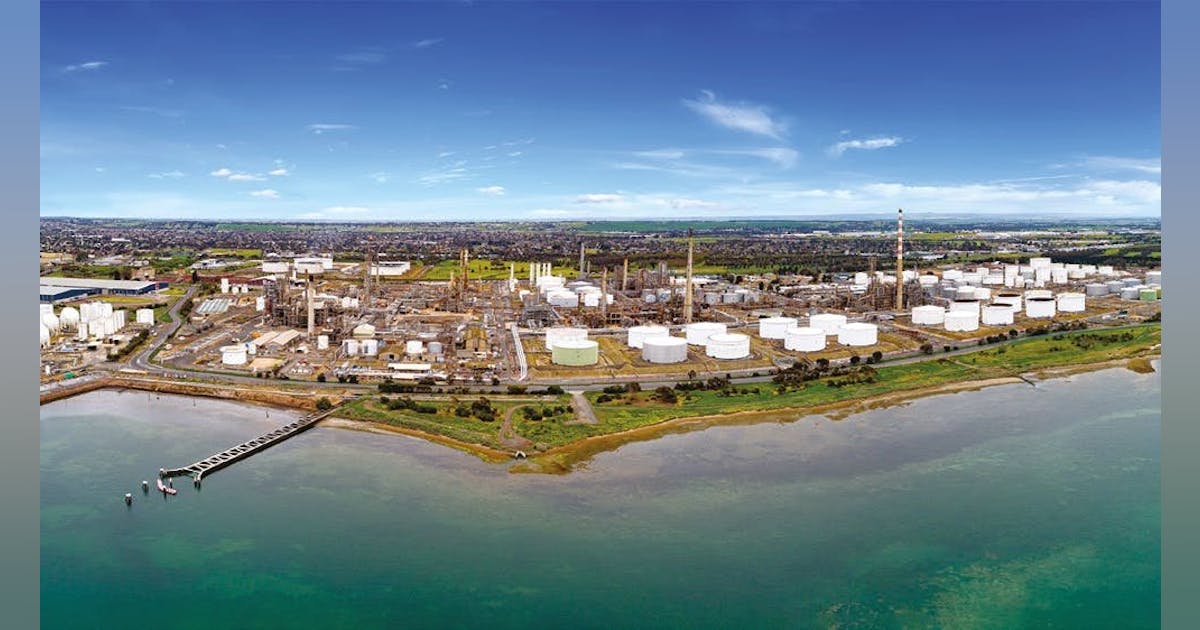
The present imposition of sweeping tariffs by the U.S. government has sent ripples through various sectors of the economy, with the data center industry poised to experience significant ramifications. These tariffs, encompassing a baseline 10% duty on all imports and escalating to higher percentages for specific countries—such as 54% on Chinese imports—are set to influence data center construction, hardware manufacturing, software development, supply chains, user demand, and energy consumption.
Impact on Data Center Construction, Energy Access and Site Seletion
Data center construction has long been dependent on key materials such as steel and aluminum, which are essential for everything from structural frameworks to power infrastructure. The newly enacted 25% tariff on steel imports represents a significant escalation in material costs, with analysts predicting a ripple effect throughout the entire data center ecosystem. For the construction industry, this price hike means an immediate increase in the cost per square foot of building new facilities—costs that are likely to be passed on to developers and ultimately to end users.
More concerning, however, is the potential for delayed project timelines. The data center industry, already operating under tight deadlines to meet surging demand for digital infrastructure, could see construction timelines stretched as a result of both rising material costs and the limited availability of key components. Steel and aluminum are used in not just the physical building, but in critical power systems—transformers, switchgear, and cooling equipment. A shortage of these materials could, therefore, exacerbate ongoing supply chain bottlenecks, pushing back go-live dates for new facilities and forcing operators to reevaluate their development strategies.
Furthermore, analysts are particularly worried about the compounded impact of these tariffs on already-strained energy access. In regions like Northern Virginia, Silicon Valley, and parts of Texas, data center growth has been stifled by grid congestion, making it difficult to secure the necessary power infrastructure for large-scale operations. Now, with the cost of essential electrical components—such as steel transformers—set to rise, the tariff-induced delays could make it even harder to ensure reliable power supply.
This double whammy of higher construction costs and energy infrastructure delays could stymie efforts to meet the rapidly growing demand for data center capacity, slowing overall sector growth and potentially deterring new investment in data center construction for the foreseeable future.
The situation is compounded by the global scale of the supply chain disruptions. Tariffs on steel and aluminum are not isolated to the U.S.; they affect manufacturers and suppliers worldwide, increasing costs for foreign manufacturers who supply key data center components. This interconnectedness means that the ripple effects will be felt not only in domestic construction, but also in the global supply of critical hardware, including power equipment and cooling systems.
Ultimately, the broader implications of these tariffs could force data center operators to shift their site selection strategies, prioritizing locations with more stable material costs or a greater supply of local resources to mitigate delays. With the tariff burden set to affect construction costs, energy access, and supply chain reliability, the data center industry faces a challenging road ahead.
Manufacturing and Supply Chain Disruptions
The tariffs are poised to disrupt the intricate global supply chains that the data center industry depends on. With steep tariffs on imports from China—a key supplier of semiconductors, networking gear, and power equipment—data center operators face a dual challenge: rising costs and potential supply shortages. These pressures could disrupt hardware procurement cycles, slow infrastructure deployments, and force companies to reconsider sourcing strategies at a time when demand for digital infrastructure is surging.
Faced with escalating costs and supply constraints, data center operators and hardware manufacturers may be forced to pivot toward alternative suppliers in regions like Southeast Asia, Mexico, or domestic production in the U.S. However, reshoring critical manufacturing—particularly for semiconductors, networking equipment, and power infrastructure—is a complex, capital-intensive process that requires years of investment in fabrication plants, skilled labor development, and regulatory approvals.
In the near term, this shift could lead to delays in hardware availability, extended deployment timelines, and increased pricing volatility across the data center supply chain.
Implications of Tariffs for Advanced Hardware and Software Development
The semiconductor industry plays a critical role in the functionality and efficiency of data centers, powering everything from servers to high-performance computing (HPC) systems. In the face of rising tariffs, the impact on chip suppliers such as NVIDIA, AMD, and Intel is expected to be significant and far-reaching, with potential consequences not only for hardware costs but also for software development and the broader infrastructure growth of data centers.
The U.S. is highly reliant on foreign manufacturers for its semiconductor supply, with estimates suggesting that approximately 80% of chips are imported. This dependency makes the industry particularly vulnerable to tariff-induced price hikes. The imposition of these tariffs directly affects major players like NVIDIA, AMD, and Intel, each of which sources critical components from global suppliers, particularly in Asia.
NVIDIA, the leader in AI-driven GPUs, faces a unique challenge. Tariffs on GPUs and related semiconductor components could drive up prices for high-performance hardware used in AI workloads, which are already in high demand due to the AI infrastructure boom. This might result in GPU shortages and hinder the rapid rollout of AI services, especially in sectors like autonomous driving, machine learning, and cloud gaming. In fact, some analysts predict that the bottleneck caused by higher tariffs could slow the adoption of AI technologies, as businesses may struggle to afford or access the necessary hardware.
AMD, another significant player in the semiconductor space, could be similarly impacted. As a supplier of both CPUs and GPUs, much of AMD’s production relies on imported materials and outsourced manufacturing processes. The company’s position in the data center market, particularly in cloud computing and high-performance computing, means that any disruption in chip supply could delay server upgrades and reduce the availability of new offerings. This is particularly concerning as cloud service providers and hyperscalers such as Amazon Web Services and Microsoft Azure have ramped up demand for AMD-powered solutions, which could face extended lead times as tariffs add another layer of cost.
Intel, the traditional powerhouse in semiconductor manufacturing, faces a different set of challenges. While Intel has greater domestic production capacity compared to AMD and NVIDIA, it still relies on certain critical components—such as rare earth elements for chip fabrication—that are sourced globally. Any disruption in the supply chain could delay the production of Intel’s latest processors, which are pivotal for the next generation of data centers. Intel’s shift to advanced 3nm technology and its move toward expanding in the AI space could also be significantly slowed by tariff-related delays. Intel is investing heavily in domestic chip production, but the time required to scale new fabrication plants and develop infrastructure could exacerbate short-term supply shortages.
As costs rise and supply chains experience delays, software development that depends on these advanced chips is also likely to suffer. Data center software, including applications powered by AI, machine learning, and real-time data analytics, is often tightly coupled with cutting-edge hardware. As chip availability tightens, developers may experience delays in rolling out new services or features. This could lead to a stagnation in software innovation, as the hardware necessary to support next-generation software becomes harder to procure or prohibitively expensive.
Moreover, the wider economic implications are also substantial. Increased chip prices could ultimately affect the total cost of ownership (TCO) for data centers, forcing operators to reconsider their procurement strategies and potentially raise service prices. Given the centrality of these chips in high-demand sectors such as AI, machine learning, and cloud computing, any slowdown in hardware production would reverberate through the entire ecosystem, affecting both providers and consumers.
The combination of supply shortages and rising costs may not only delay the rollout of new hardware and software but could also lead to market fragmentation. In the face of rising costs, certain regions may prioritize different suppliers, potentially changing the global distribution of data center infrastructure and supply chain routes. The shifting dynamics in chip production could further alter the competitive landscape, particularly for hyperscalers looking to build out the next wave of cloud infrastructure.
Ultimately, the increased tariffs on chips and their supply chain components pose a direct challenge to the scalability and innovation of data centers. With companies like NVIDIA, AMD, and Intel facing cost increases and potential shortages, data centers may find themselves with limited options for expanding and upgrading their infrastructure. For the software development community, which depends on cutting-edge hardware to innovate, the slowing of hardware production could translate into longer development timelines for next-generation applications. In the race to deliver new services and applications, the growing tariff burden may ultimately slow progress and restrict growth within the data center industry.
The strategic question for the industry now becomes: How will stakeholders in data centers and software development respond to these disruptions? Will they focus on reshoring semiconductor production to mitigate these challenges, or will they lean on supply chain diversification to find new avenues for sourcing chips? The answers to these questions will significantly shape the future of data center operations and the digital economy.
How Tariffs Could Affect User Demand and Data Center Market Dynamics
As tariffs drive up costs for raw materials, semiconductors, and essential electrical components, data center operators will have little choice but to pass these increases along to customers. Colocation providers, hyperscalers, and enterprise users could see higher lease rates and cloud service pricing, particularly as construction and infrastructure deployment become more expensive.
The impact will be felt most acutely by cost-sensitive businesses, including startups, SMBs, and organizations operating on thin margins, potentially pushing them toward alternative solutions such as multi-cloud optimization, server repatriation, or regional providers with lower overhead.
In colocation, rising costs may accelerate trends toward consolidation, where larger players with economies of scale absorb price increases more effectively than smaller competitors. Meanwhile, enterprises may reconsider long-term data center expansion plans, delaying deployments or seeking more energy-efficient and cost-effective strategies.
A study from Synergy Research Group has already indicated that inflationary pressures and supply chain constraints have driven up the cost of cloud services in recent years. With tariffs further compounding these pressures, the total cost of ownership (TCO) for IT infrastructure could become a growing concern, leading businesses to rethink their digital transformation strategies.
A New Layer of Uncertainty
The volatility of U.S. trade policy, coupled with the risk of retaliatory tariffs from key global partners, injects a new layer of uncertainty into the data center industry. This unpredictability makes long-term capital planning more complex, particularly for hyperscalers and colocation providers that rely on stable supply chains and predictable cost structures to plan multi-billion-dollar investments.
Historically, trade tensions have led to market distortions that extend beyond direct tariffs. For example, during the U.S.-China trade war, semiconductor firms stockpiled inventory to hedge against supply disruptions, which later resulted in supply gluts and price swings. A similar scenario could play out in the data center sector, where uncertainty may prompt operators to delay expansion plans or seek alternative regions for growth.
The risk of retaliatory tariffs from trading partners such as the European Union and China could also impact U.S. exports of data center-related technologies, including high-performance computing (HPC) systems, AI chips, and cloud services. Some governments may introduce countermeasures that favor domestic cloud providers over U.S.-based firms, further fragmenting the global data center market.
A 2024 report from the Information Technology & Innovation Foundation (ITIF) warned that ongoing tariff escalations could slow innovation in the tech sector by reducing R&D investment and constraining access to next-generation hardware. For the data center industry, this could mean delays in the adoption of emerging technologies such as liquid cooling, AI-driven automation, and advanced energy storage solutions—all of which depend on global supply chains.
In the near term, the uncertainty surrounding trade policies may lead investors to take a more cautious approach, favoring expansion in markets with stable regulatory environments. If prolonged, this could slow North America’s data center growth trajectory, ceding opportunities to regions with fewer trade restrictions and more predictable infrastructure costs.
Tariffs: More On Energy Concerns and Infrastructure Strain
One of the most critical yet underappreciated impacts of the new tariffs is their effect on energy infrastructure—an area already under strain as data centers compete for grid capacity. The U.S. data center industry is expanding rapidly, with hyperscale and colocation operators requiring access to reliable power at an unprecedented scale. However, the availability of electrical infrastructure, particularly transformers, is becoming a growing bottleneck, and tariffs on steel and aluminum threaten to worsen this crisis.
Large power transformers (LPTs) are essential for stepping up and stepping down voltage between power plants, substations, and data center campuses. The U.S. imports more than 80% of its LPTs, with South Korea, Canada, and Mexico among the primary suppliers. A report from the Department of Energy (DOE) has already warned of a critical shortage of these components, with lead times stretching to 18-24 months in some cases. Tariffs on steel, a key material in transformer cores, could further limit supply, drive up prices, and extend procurement delays.
Additionally, the domestic production of electrical components is insufficient to meet demand. According to the National Electrical Manufacturers Association (NEMA), U.S. transformer manufacturing capacity is constrained by labor shortages, limited steel processing facilities, and regulatory challenges. Increased tariffs may discourage foreign suppliers from selling to the U.S. market, exacerbating an already fragile situation.
For data center operators, these supply chain constraints mean potential delays in securing new power connections, slowing project timelines and complicating expansion plans. In regions already facing grid congestion—such as Northern Virginia, Phoenix, and parts of Texas—tariff-driven shortages could make it even more difficult to secure the necessary infrastructure for large-scale deployments.
Ultimately, energy access has become a defining factor in data center site selection, and any disruption to the availability of critical power components could influence where and how new capacity is built. If tariffs persist or expand, the industry may need to even more intensely explore alternative power solutions, including microgrids, on-site generation, and enhanced energy storage, to mitigate the risk of infrastructure delays.
Could Data Center Supply Chain Delays Impede Expansion Plans?
The widening gap between power demand and infrastructure readiness is one of the most pressing challenges facing the data center industry. Tariff-driven delays in acquiring critical electrical components, such as transformers and switchgear, could directly impede data center expansion plans, forcing operators to push back go-live dates or scale back projects. This is particularly concerning in high-demand regions like Northern Virginia, Dallas, and Silicon Valley, where new power allocations are already constrained by grid limitations.
Beyond immediate supply chain bottlenecks, the broader energy landscape is also at risk of disruption due to the potential onshoring of energy-intensive manufacturing. Industries such as steel and aluminum production—both heavily impacted by tariffs—require vast amounts of electricity. If tariffs incentivize domestic production of these materials, it could add significant load to regional grids, increasing competition for power resources at a time when utilities are already struggling to keep up with data center demand.
The strain on the power grid could have multiple consequences for data center operators. First, increased industrial power consumption may drive up wholesale electricity prices, making it more expensive to secure long-term power purchase agreements (PPAs). In markets where data centers have historically benefited from low-cost electricity—such as the Midwest and Pacific Northwest—rising industrial demand could erode that competitive advantage.
Second, grid congestion and limited transmission capacity could force utilities to prioritize energy distribution, potentially delaying power delivery for new data center projects. This has already been observed in areas like Dublin, Ireland, where data center growth has prompted grid regulators to impose moratoriums on new connections. If similar constraints emerge in U.S. markets, it could lead to prolonged approval processes and increased costs for securing power infrastructure.
Finally, data centers may need to accelerate investment in alternative energy strategies, such as on-site generation, microgrids, and energy storage solutions, to mitigate risks associated with grid instability. While some hyperscalers have already begun exploring these approaches, tariffs and shifting energy dynamics may make self-sufficiency a more urgent priority for operators across the industry.
In the long run, the intersection of trade policy, energy infrastructure, and data center expansion will require careful navigation. If tariff-related power constraints persist, operators may need to reassess site selection strategies, favoring locations with more predictable and abundant energy access while diversifying their approach to power procurement.
Sampling of Industry Response
The imposition of the tariffs has elicited significant concern from key stakeholders within the data center industry.
Linda Moore, President and CEO of TechNet, emphasized the potential economic repercussions, stating, “Tariffs on essential data center components, such as servers and transmission devices, threaten to stall this engine of economic growth by disrupting supply chains, increasing costs through de facto taxes, and injecting uncertainty into business operations and local economies that host data centers.”
Analysts have also highlighted specific vulnerabilities. Jeff Currie, Chief Strategy Officer of Energy Pathways at Carlyle, pointed out that the tariffs could exacerbate existing shortages in critical infrastructure: “If you put tariffs disrupting supply chains, it just aggravates that situation.”
Such insights underscore the multifaceted challenges the data center industry faces in light of the new tariff policies, affecting construction costs, supply chains, and overall operational efficiency.
What Tariffs Could Mean for the AI Boom
The newly imposed tariffs represent the most significant economic disruption since the COVID-19 pandemic, posing a complex challenge for the data center industry at a time of unprecedented demand. With rising costs across construction, supply chains, hardware and software development, energy infrastructure, and end-user pricing, operators must make strategic decisions to sustain growth while adapting to shifting economic realities.
One of the most critical—and still unfolding—questions is how these tariffs will affect the AI infrastructure boom. The rapid deployment of AI workloads has already driven hyperscale operators to ramp up data center construction at record levels, triggering supply chain constraints for GPUs, high-density power infrastructure, and advanced cooling systems. If tariffs disrupt the availability or affordability of these components, will it slow AI adoption, or will hyperscalers absorb the costs to maintain momentum?
Further, AI workloads require significantly more power per rack than traditional cloud applications. With tariffs potentially exacerbating transformer shortages and power grid congestion, will AI-driven data centers need to accelerate investment in on-site generation, battery storage, or microgrid solutions to avoid deployment bottlenecks? If domestic semiconductor manufacturing is prioritized under tariffs, could AI chip production benefit in the long run, or will near-term supply issues outweigh those gains?
The industry will need to explore a range of strategies to navigate these challenges. Supply chain diversification—already a priority due to prior global disruptions—will become even more critical. But will alternative sourcing from regions like Southeast Asia and Latin America provide enough capacity to meet AI-driven demand?
Investments in domestic manufacturing are another key consideration, yet the reality remains that semiconductor fabrication, transformer production, and specialized cooling hardware require long lead times and massive capital expenditures. Will U.S. policy incentives align quickly enough to make reshoring a viable solution, or will data center operators be forced to shoulder the burden of higher costs indefinitely?
Finally, the geopolitical dimension cannot be ignored. With the U.S. imposing tariffs on key imports, the potential for retaliatory trade measures looms large. Could this result in restrictions on critical rare earth materials, lithium-ion battery components, or other essential elements of data center infrastructure? If so, how will companies future-proof their operations against escalating trade disputes?
Conclusion
As data center operators, policymakers, and technology providers grapple with these uncertainties, one thing is clear: proactive adaptation will be essential. The industry must balance short-term cost pressures with long-term strategic shifts in supply chain resilience, energy planning, and technology investments. Whether these tariffs will serve as a temporary disruption or a catalyst for fundamental change in data center infrastructure remains to be seen—but those who navigate this transition effectively will shape the next phase of digital infrastructure evolution.






















